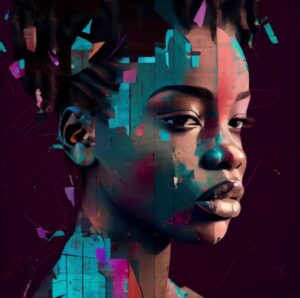In recent years, the convergence of technology and creativity has given rise to a fascinating phenomenon AI art generators. These tools, powered by artificial intelligence, have revolutionized the art world by producing stunning and innovative artworks that challenge conventional notions of human creativity. In this article, we will delve into the world of AI art generators, exploring what they are and how they work.

The Rise of AI in the Art World
Artificial Intelligence has made its mark in various industries, and the art world is no exception. AI art generators, often referred to as "artificially creative" tools, leverage the capabilities of machine learning algorithms to generate artworks that range from paintings and illustrations to music and poetry. These tools utilize a blend of algorithms, deep learning, and neural networks to mimic human artistic processes, thereby expanding the boundaries of artistic expression.
Understanding AI Art Generators

At its core, an AI art generator is a computer program that creates visual or auditory content by learning from existing data. The process involves training a machine learning model on a vast dataset of artistic works, enabling it to recognize patterns, styles, and techniques. The model then uses this acquired knowledge to generate new, original pieces of art based on the input it receives.
How AI Art Generators Work
Data Collection and Preprocessing
The journey of an AI art generator begins with collecting a diverse dataset of existing artworks. This dataset can encompass a wide range of artistic styles, genres, and periods. Once collected, the data is preprocessed to ensure that the AI model can effectively learn from it. This involves tasks such as resizing images, standardizing formats, and removing noise.
Training the Model
The preprocessed dataset is used to train a neural network, which is a key component of an AI art generator. Neural networks are designed to simulate the human brain's structure and function, comprising interconnected nodes that process information. During training, the neural network learns to identify intricate patterns and relationships within the artwork dataset.
Feature Extraction
As the neural network learns from the dataset, it extracts features that define various artistic styles, techniques, and elements. These features could include brush strokes, color palettes, composition structures, and more.
Generating Artworks
After training, the AI art generator is equipped with the knowledge it has gleaned from the dataset. To create a new artwork, a user provides input in the form of parameters, such as the desired style, theme, or mood. The generator then employs its neural network to combine and manipulate the learned features, resulting in the generation of a unique piece of art.
Iterative Refinement
AI art generation is often an iterative process. The generated artwork is presented to the user, who may provide feedback or adjustments. This feedback can be incorporated into the generator's model, allowing it to refine its future creations based on user preferences.
Challenges and Ethical Considerations
While AI art generators offer unprecedented possibilities for creative expression, they also raise several challenges and ethical considerations. One of the main debates revolves around the question of authorship. Since the AI system relies heavily on preexisting artworks, questions arise about the originality of generated pieces and whether they can be truly considered the work of the AI or its human trainers.
Additionally, there's the concern of perpetuating biases present in the training data. If the dataset used to train the AI model is biased in terms of race, gender, or other factors, the generated art could unintentionally reinforce these biases.
The Future of AI Art Generation
As technology continues to advance, the potential of AI art generators is poised to expand even further. Researchers and developers are working on enhancing the sophistication of these tools, allowing them to generate art that not only replicates existing styles but also pushes artistic boundaries by creating entirely new genres and aesthetics.
In conclusion, AI art generators represent a groundbreaking marriage between technology and creativity. These tools harness the power of machine learning to create artworks that challenge our understanding of artistic expression. While they come with their share of challenges, they also offer a glimpse into a future where AI and human artists collaboratively shape the artistic landscape in unprecedented ways.
